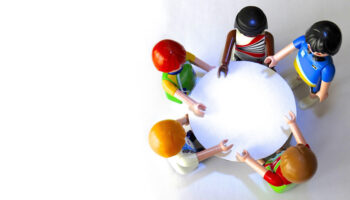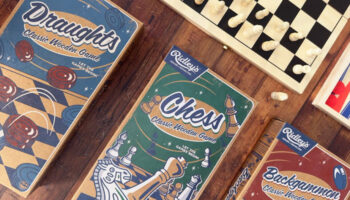GPI’s Top 10 Things to Know About… Paper Stocks and Printing Techniques

GPI’s ‘Things to Know’ series continues with this deep dive into paper and printing.
1. We can print on foil paper – usually rainbow foil – so that the foil background appears through the printed images.
2. Card stock comes in different thicknesses – and can come with a core if desired. The differences in core types are shown in different quality “memory” – that’s the tendency of the card to return to the original shape it had before the shuffling or handling of the cards. Varnish on the cards is added to keep dirt and grime from the card surface and to keep a smooth surface on the card.
3. Board and card game trays can be made from paper products: CCNB (aka duplex board) and rigid e-flute laminated with C1S (1-side coated paper). And C2S for some card games. These are valuable as plastic-free packaging, and the surface of the tray can be printed on one side.
4. Many paper coatings are applied on paper via a printing press (press varnish), but also a heavier coating can be applied by an after-process lamination. Common applications are Polypropylene (PP) gloss laminate, PP matte laminate, soft-touch laminate, and scuff-free laminate.
5. Most commercial printing is achieved by 4-color process printing (aka CMYK printing), but Pantone spot colours can be added to the printing when an exact Pantone colour (or a bright white colour) is required in the artwork.
6. Common game box types are telescoping box (lid & base), tuck box (folding – a flap tucks into the inside of the box) and pizza box (think, pizza box!). A magnetic closure box is often called a book fold & tray – the “tray” is the same as the base in a telescoping box – and the book fold is a scored and folded wraparound, secured by magnets.
7. Paper has been known to be combustible if exposed to open flames. The application of water tends to douse the flames. This, however, usually renders the paper unusable. The process of combustion also tends to affect the appearance and function of the paper as well. So, try to avoid subjecting the paper to open flames. And water for that matter.
8. Paper used for playing cards is typically made up of two outer sheets that are laminated to an inner layer called a “core”. This core can be grey, white, black, blue, or purple in colour. The inner core helps to ensure that the printing on one side of the card is not able to be read from the other side.
9. A textured pattern, typically a linen finish, can be applied to paper after printing by feeding the sheet through a set of rollers that presses the pattern into the paper. Fun fact, GPI has a proprietary finish, an alternative to the popular linen finish.
10. Folding gameboards usually have a layer of tape under the bottom sheet where the fold occurs. This strengthens the folding function. Also, the gap between two sections of chipboard is called the “valley”
–
To stay in the loop with the latest news, interviews and features from the world of toy and game design, sign up to our weekly newsletter here























